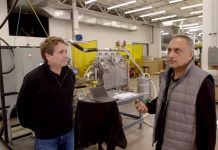Uremia, or the diagnosis that the kidneys have stopped functioning properly for some reason, has been known since the time of the Ancient Greeks. It is only within the last century, however, that medical science has been able to do something to treat people with uremia. When the kidneys are not functioning properly, the toxins that are in the bloodstream cannot be properly filtered out. That’s what peritoneal dialysis does, using the body’s own peritoneum as a membrane to filter out the toxins.
Peritoneal dialysis is the most common form of home dialysis and allows the procedure to be performed virtually anywhere. It uses the lining of the abdomen to perform the treatment and was first used in a modern way in 1968 when Henry Tenckhoff created a catheter that could remain in the abdomen permanently. Before Tenckhoff, the procedure was performed for nearly 40 years with new insertions of a catheter for every treatment.
Why Use Peritoneal Dialysis?
Instead of having the blood filtered outside of the body, requiring someone to be hooked up to a machine for several hours at a time with limited movement, the PD process allows for a quicker, more mobile process of filtering the blood that has fewer side effects. There are also fewer dietary restrictions in place for Peritoneal dialysis as the filtering mechanism is more natural, allowing for a better quality of life.
Tenckhoff built the machine during his time as an Assistant Professor at the University of Washington in Seattle. The purpose is simple: there are fewer overall hazards when the body’s natural systems are used. A solution, which is called dialysate, remains inside the abdomen for about 20 minutes and then is automatically removed with clean blood and the cycle then repeats itself. Today it can even be done automatically in certain circumstances.
What About the Early Days of Peritoneal Dialysis?
There isn’t a lot said about PD before Henry Tenckhoff , but the 40 years of research that went into the field before the modern dialysis techniques are extremely important. The first patient who was successfully treated in this manner happened around 1938 and there were documented successes of PD happening in 1945. A mismatched blood transfusion was successfully treated using this technique as well in 1946.
The research into the value of Peritoneal dialysis started in 1923 thanks to a combination of US and German efforts to test the filtering power of the peritoneum. Technology just wasn’t available to make treatment a practical reality until around 1959, when Morton Maxwell developed an infusion, drainage system that made a dialysis treatment less of a last resort. Maxwell’s contributions are still used in the PD process in some ways as well, though the soft catheters of the Tenckhoff method are preferred.
Peritoneal dialysis allows for people to have a prolonged, active life when even two generations ago that would not have been possible. That’s the reality of modern medical science and Henry Tenckhoff had a small role to play in that.
Strong proponent of individual liberty and free speech. My goal is to present information that expands our awareness of crucial issues and exposes the manufactured illusion of freedom that we are sold in America. Question everything because nothing is what it seems.




















